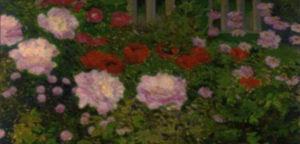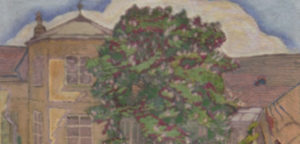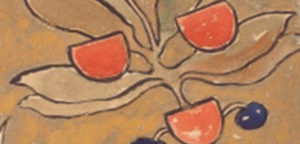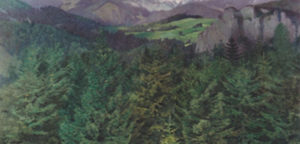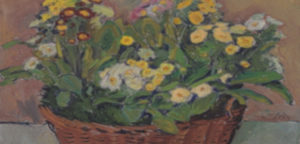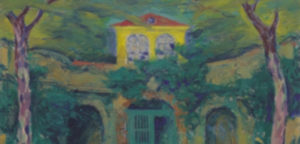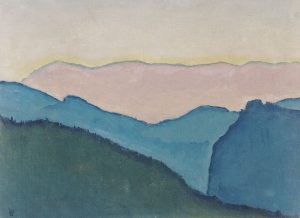Koloman Moser was born on March 30, 1868 in Vienna, Austria.
1868 - 1918
Koloman Moser
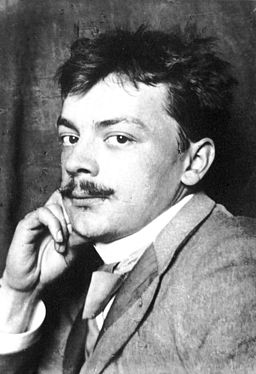
description
An Austrian artist-decorator, painter, illustrator and poster artist.
He was born into the family of Josef Moser, a teacher and director of the gymnasium. After graduation, Koloman learned to paint at the trade school in Widen.
Koloman Moser is the most important figure of Austrian Art Nouveau (Jugendstil), a founding member of the Vienna Secession and the organizer of the famous “Vienna workshops”, where the artistic design of household items was massively performed. Together with Gustav Klimt K. Moser drew illustrations for “Sacred Spring”, the leading art magazine of Austria, and created several posters of the Vienna Secession exhibitions. The artist made a large number of sketches for the decoration of jewelries, lamps, textiles and dishes. He was a trendsetter in the interior, especially furniture design, which was in great demand among the admirers of Art Nouveau. Stained-glass window by Koloman Moser is depicted on the commemorative coin of 100 euros, issued in 2005.
One of the artist’s greatest achievements was the stained glass and murals of the Steinhoff Wagner church, which he made in 1904. After exiting from the Vienna Secession in 1905 and the “Vienna Workshops” in 1907, Moser began to pay much attention to paintings. In the author’s creative heritage, there is a large number of landscapes, still lifes and portraits, painted in an energetic manner with bright, saturated colors, sometimes in unusual and bold combinations.
Key Ideas:
– Koloman Moser showed himself in the most diverse areas of artistic creativity. He is known as the creator of graphically perfect postcards, posters, elegant pieces of furniture and household items, as well as ladies’ outfits in the style of art nouveau. His works are distinguished by smooth lines, originality of the color solution and accord with the stylistics of his epoch.
– The elegant and strictly geometric designs of furniture made of metal and wood, in which the cubic form appears as a functional aesthetics, are a vivid example of Art Nouveau of the early 20th century. The most reproducible work of Moser from this initial period is the poster he painted in 1899 for the exhibition of the Fifth Secession. It demonstrates the flourishing of the creative powers of Moser as the representative of Art Nouveau and generally is a model of the graphic design of Art Nouveau. The images are lithographed with a small set of three colors – pale yellow, dark green and the color of old gold, but the sense of tangible depth and figured plasticity is clearly conveyed. The free use of a line creates a rare smoothness – “seamlessness” in the design.
– Different areas of the poster are united by vine-like curves – they fill almost all free space. In this and other posters, even the inscriptions were carefully thought out to harmonize and partially merge with the ornament, while remaining completely and easily readable. Thus, Moser achieves a high degree of aesthetic unity, not sacrificing the functionality of the promotional artwork.
– Despite the fact that the author makes an emphasis on nature (a vegetable pattern), there are works in which the center is a certain winged figure that is difficult to identify – whether it’s an angel, or a divine spirit or something else. A similar nature of uncertainty is sometimes acquired by plants, similar to both grapes and fantastic berries or fruits.
– Moser’s favorite theme was mountain landscapes, which he performed in various variations of coloristic decisions. The artist created the most beautiful paintings of the Austrian Alps, simplifying the composition and discarding the naturalistic detailing. Depicting nature, he gave great importance to colors and lines, thanks to which the landscapes of Koloman Moser become close in spirit to Japanese graphic images.
1868
1885
1892 - 1893
1897 - 1901
1902
1905
1909 - 1916
1918
The birth of the artist
He graduated from a trade school
He graduated from a trade school and, without informing his parents, passed the entrance examination to the Academy of Fine Arts in Vienna, one of the oldest and most prestigious art schools in Europe. He attended the classes of F. Rumpler, K. Gripenker, M. Trenkwald. After his father’s death in 1988, he had to pay for his own education, working as an illustrator at magazines.
He became a member of creative association Zibener-Club
After receiving the recommendation of one of the teachers, famous Austrian artist Trenkwald, he began teaching painting to the children of Archduke Karl Ludwig. Improved his skills under the guidance of Franz von Mach. At the same time, he became a member of creative association Zibener-Club, which later joined the Vienna Secession.
Became one of the founders of the association of artists Vienna Secession
Became one of the founders of the association of artists Vienna Secession, which worked under the leadership of Gustav Klimt. The artist created about 140 illustrations for many issues of the magazine Secession Ver Sacrum,. In the autumn of 1897, Koloman Moser traveled around Europe. Visited Berlin, Munich, Dresden, Leipzig, Prague, as well as the World Exhibition in Paris, held in 1900.
He began to actively work as a designer
He began to actively work as a designer. He created sketches for the production of furniture, textiles, dishes, lamps and clothing. In the same year, together with Austrian artist Josef Hoffman and entrepreneur Fritz Werndorfer, he organized “Vienna Workshops” – an enterprise where unique designer items were produced.
Left the Vienna Secession association
Koloman Moser, along with Gustav Klimt and a number of other artists, left the Vienna Secession association, and in 1907, due to disagreements with Fritz Werndorfer, left the Vienna Workshops.
The personal exhibition of the artist's works
Was engaged mainly in painting, created numerous mountain landscapes, portraits, still lifes. In 1911, a personal exhibition of the artist’s works was held, in the following years he exhibited his works at many exhibitions throughout Europe, the main of which were the First International Exhibition of the Secession in Rome, shows in Dresden, Dusseldorf and Mannheim, 1916 Vienna exhibition in Berlin (1916).
The death of the artist
He passed away on October 18, 1918 in Vienna, Austria.
Koloman Moser
On Artist
flow
Impressionism
friends
Joseph Hoffman
artists
Gustav Klimt
Franz Rumpler
Christian Gripenckerle
Franz Josef von Mach
Charles Renny McIntosh
Margaret Macdonald McIntosh
Ferdinand Hodler
Matthias von Trenqualder
By Artist
flow
Abstract art
friends
Josef Olbrich
Max Kurzweil
Karl Moll
artists
Stanislav Wyspyansky
Lucien Levi-Drume


